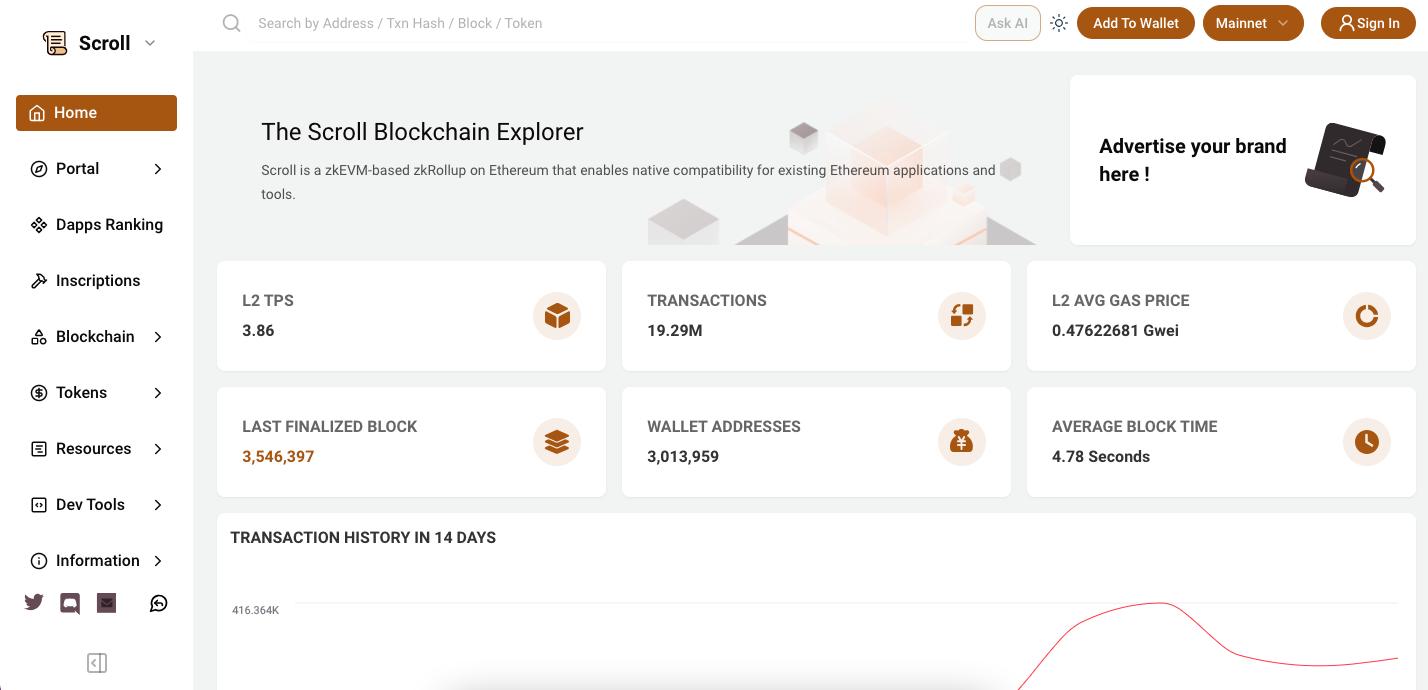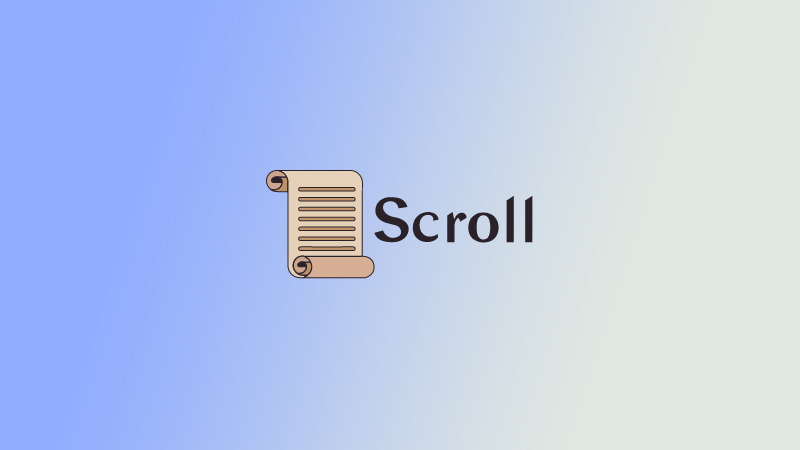Scroll, a Layer 2 network built by and for Ethereum developers, offers a promising solution. By leveraging innovative zkEVM technology, Scroll aims to deliver unmatched scalability, security, and developer convenience.
This article dives deep into Scroll’s features, technology, and benefits, helping you decide if it’s the right choice for your Ethereum development needs.
Key Takeaways
- Scroll is a Layer 2 scaling solution for Ethereum, utilizing zkEVMs (zero-knowledge Ethereum Virtual Machines) for efficient transaction processing.
- zkEVMs enable Scroll to bundle multiple transactions, significantly reducing data stored on the main chain and boosting transaction throughput.
- Scroll prioritizes developer experience, offering a familiar EVM environment and seamless integration with existing Ethereum tools.
- Features like Sepolia testnet, faucet, bridge, and Scrollscan empower developers to build and test dApps with ease.
What Is Scroll?
Ethereum’s scalability limitations are no secret. Scroll tackles this challenge with zkEVMs, a cutting-edge technology that combines zero-knowledge proofs with the familiar EVM environment. This powerful duo allows Scroll to:
- Validate transactions off-chain, drastically reducing on-chain data and transaction costs.
- Generate cryptographic proofs confirming the validity of off-chain transactions, ensuring network security.
- Maintain compatibility with existing Ethereum tools and dApps, making it easy for developers to adopt Scroll.

Scroll’s Architecture: Working in Harmony
Scroll’s architecture comprises several key components that work together seamlessly:
- Scroll Nodes: Handle block creation, proof generation, and communication with the Ethereum mainnet.
- Roller Network: Utilizes specialized hardware (GPUs/ASICs) to generate zero-knowledge proofs efficiently.
- Rollup and Bridge Contracts: Manage ZK-rollups, ensuring smooth transitions between Scroll and Ethereum.
Developer-Centric Features for a Smooth Experience
Scroll recognizes the importance of developer experience. They offer a range of features to streamline your workflow:
- Sepolia Testnet: Experiment with building dApps in a risk-free environment, replicating both Ethereum and Scroll layers.
- Faucet: Access free testnet tokens to develop and test your dApps without spending real funds.
- Bridge: Easily move assets between Scroll, Ethereum, and the Sepolia testnet with full transparency and control.
- Scrollscan: Explore transactions, tokens, addresses, and crypto prices effortlessly within the Scroll ecosystem.

Scroll vs. the Competition: Why Choose zkEVMs?
Several Layer 2 solutions address Ethereum’s scalability issues. However, Scroll stands out with its unique approach:
- Unmatched Scalability: ZK-rollups enable significant transaction throughput reductions compared to other Layer 2 options.
- Enhanced Security: Zero-knowledge proofs guarantee the validity of every transaction, maintaining Ethereum’s security standards.
- Developer-Friendly EVM Compatibility: Seamless integration with familiar Ethereum tools and dApps minimizes development hurdles.
Is Scroll the Future of Ethereum Scaling?
With its innovative technology, developer-centric approach, and impressive features, Scroll presents a compelling solution for scaling Ethereum projects. If you’re looking to build secure, high-performance dApps without sacrificing user experience, Scroll is definitely worth exploring.


